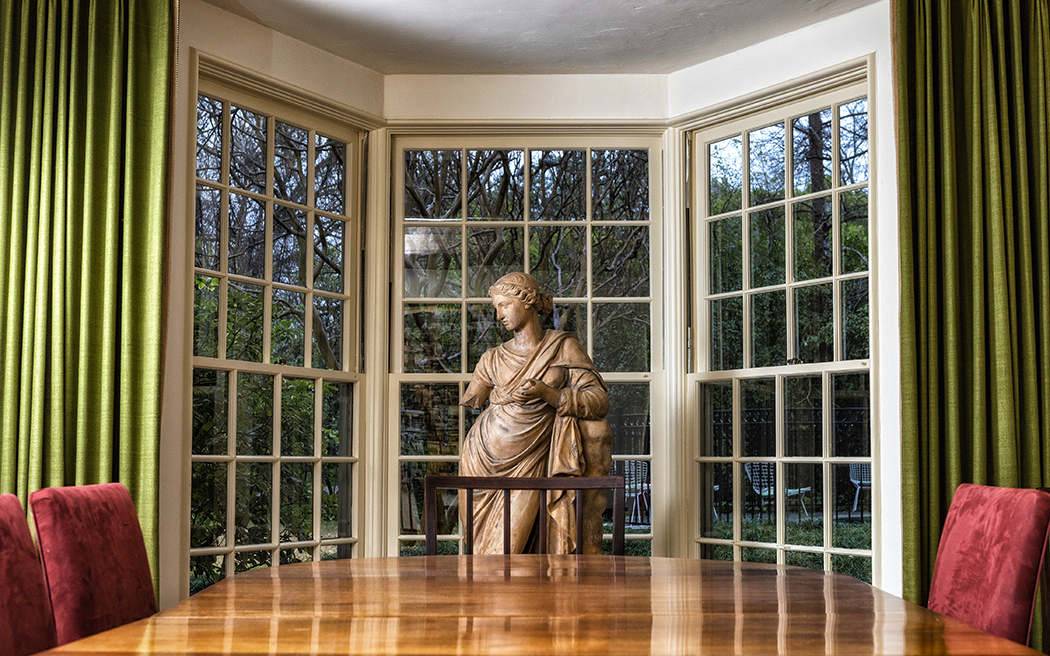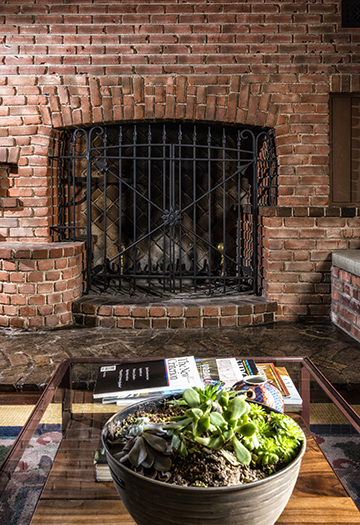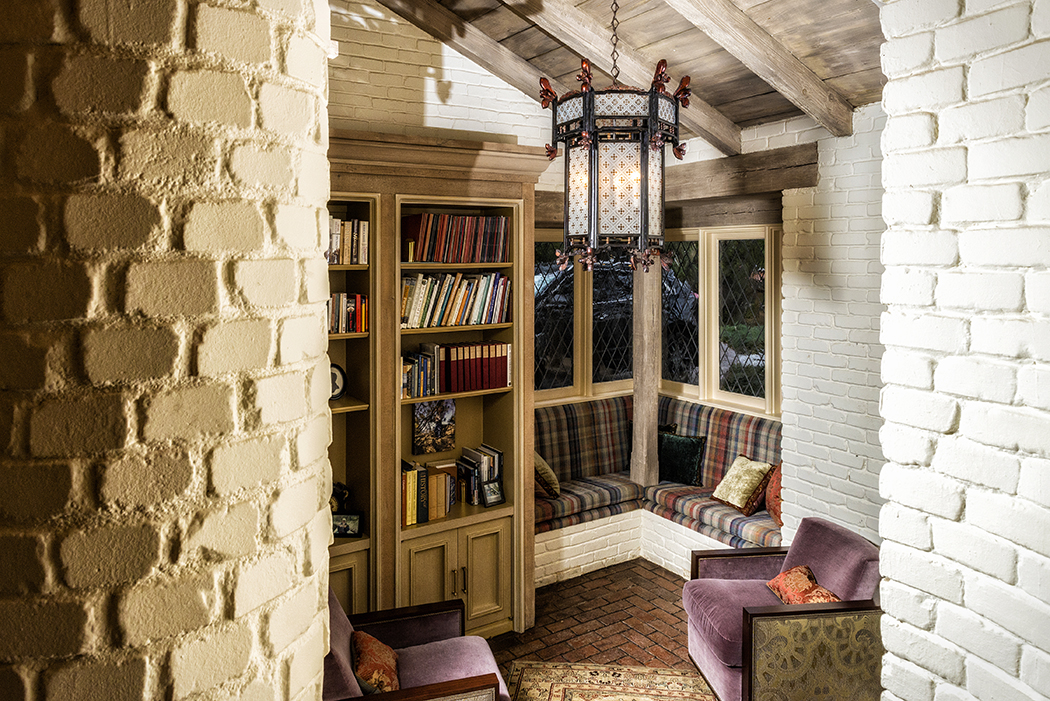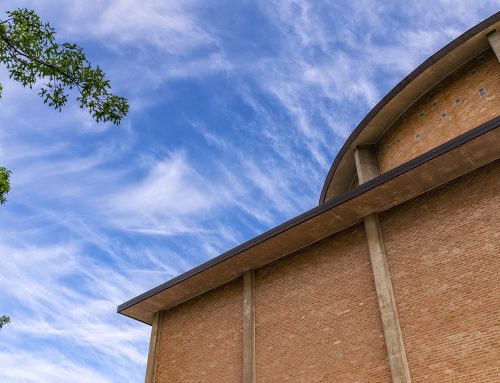
Katherine Seale’s original Dilbeck home on Chatham Hill Road. (Photo by Danny Fulgencio)
Dilbeck’s delight
In a housing market where newer is better and big is best, it’s rare someone buys an 87-year-old house to return it to its small-stature glory.
But that’s what Katherine Seale and her husband, John Henry, did.
The couple spent the past three years restoring pieces of their Chatham Hill Road home to its exact 1930s design. The property is one of renowned architect Charles Dilbeck’s earliest works in Dallas.
“The house is long and sort of a rambler,” Seale says. “It is basically one-room deep, so you get views of the outside on at least two sides. While none of the rooms are really large, they all feel open and airy.”
They plan to remove the porte-cochere, a porch-like entrance that previous homeowners added 20 years ago.
“We are trying to restore the front, or at least the front entrance as best we can using historic photographs… I’m not advising that everybody go back to the way it looked when it was constructed,” Seale says. “It just happens to make sense for us to do that.”
As the chair of the Dallas Landmark Commission and a former Preservation Dallas executive director, Seale has an affinity for architectural history. The home’s unconventional details, such as the floor-to-ceiling brick fireplace, immediately caught their attention.
“Although it was built at one time, it was made to look like it grew as the farm grew,” Seale says.
Often considered Dallas’ most prolific architect, Dilbeck completed more than 600 projects throughout the city between 1932-70.
“I don’t know if anybody else did that many projects,” says Donovan Westover, events and development coordinator of Preservation Dallas. “That reason alone makes him very, very prominent.”
Dilbeck’s success is an anomaly in many ways. He dropped out of Oklahoma A&M after two years, according to “The Drawings of Charles Dilbeck,” written by Jan Patterson, then a Ph.D. candidate at the University of Texas at Dallas. With limited formal training, Dilbeck dreamed up designs for Tulsa’s affluent oilmen when he was only 20 years old.

(Photo by Danny Fulgencio)
But his vision would change after the Depression rattled the nation. He relocated to Dallas in the early 1930s, where he spent most of his career creating homes for middle-class families instead of building estates for the city’s elite.
Dilbeck drew inspiration from French, Spanish and English architecture, and his work was best known for its use of balconies, fireplaces and turrets. He also often incorporated found materials, such as natural stone and wood, sporadically into each project. Because his style was so eclectic, his designs are nearly impossible to categorize, Westover explains.
“He just did stuff quirky,” Westover says. “It was different for the time.”
Of the 12 original Dilbeck-designed properties scattered throughout Preston Hollow, seven still stand, says Nancy McCoy, of Quimby McCoy Preservation Architecture. Because the land often is worth more than property, historically significant homes are frequently torn down in our neighborhood to make way for bigger and more extravagant houses. The homes that remain usually undergo extensive modifications or additions.
“Dallas likes the shiny and the new,” Westover says. “It’s the way it’s always been. It’s the way it always will be.”
Only one Preston Hollow neighbor, Nancy Shutt, has applied to the City of Dallas’ Landmark Commission for historical overlay protections so that her Dilbeck-designed home will be spared from wrecking balls or drastic alterations. The designation would protect the exterior and surrounding landscaping of her Park Lane property, one of Dilbeck’s more ornate designs that was constructed in 1939.
“It’s very unconventional, because it puts your house in a niche if you want to market and sell it,” Westover says.
Seale doesn’t believe historical overlay protection will deter potential buyers from considering the house, even though it does limit their renovation options, she says.
“By far and above, historical designation improves property value over time,” she says. “It provides stability, and the market prefers stability.”
Seale has no plans to sell her house, but she also hopes future owners appreciate its character.
“Most houses, even old houses, require a little bit of work to make it charming and make it something that’s reflective of who you are. With Dilbeck’s, there’s so much charm you don’t have to work as hard.”

Katherine Seale’s Dilbeck-designed home on Chatham Hill Road was built in 1930. (Photo by Danny Fulgencio)






